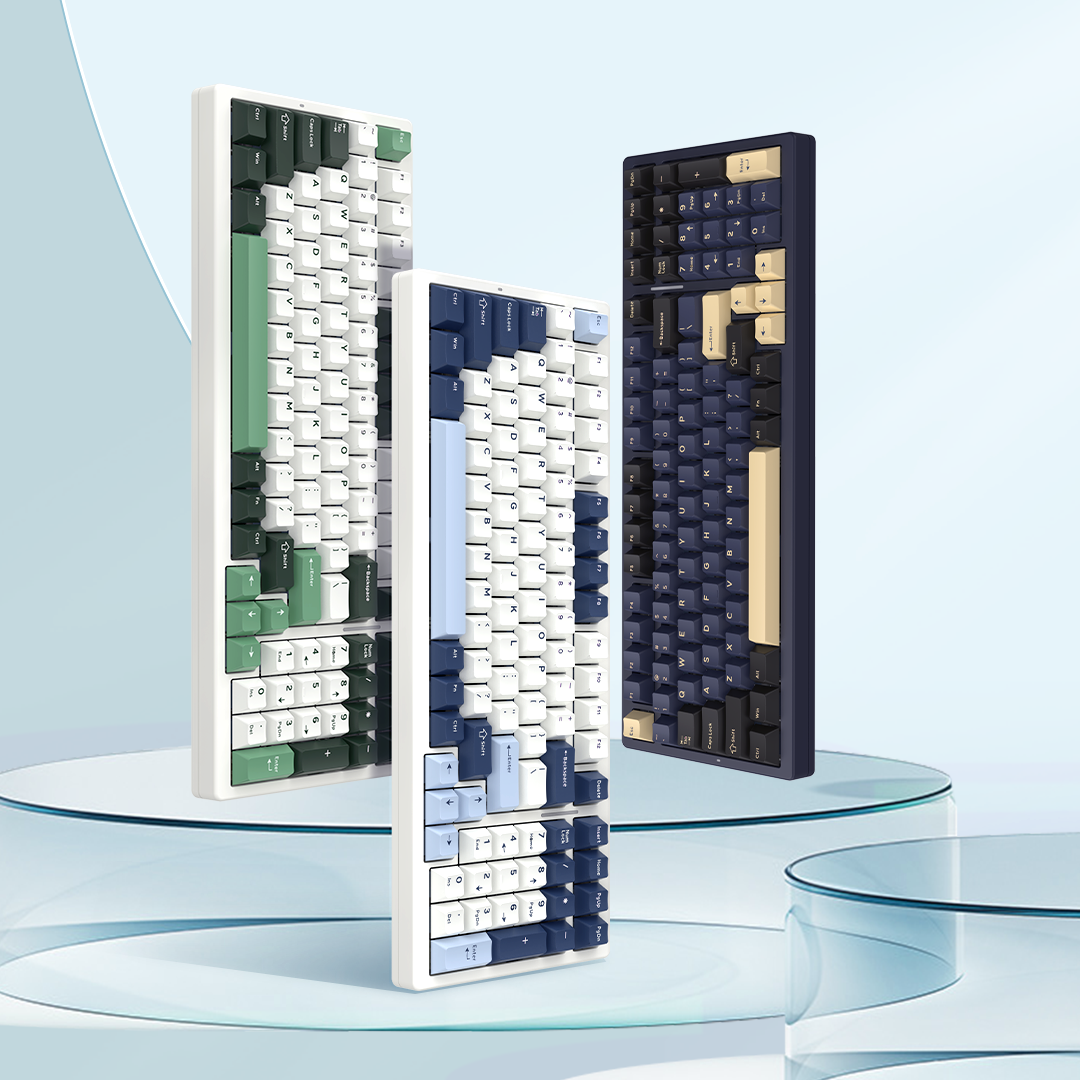Keycap Printing Process Introduction
The importance of keycap printing in gaming keyboards extends far beyond mere aesthetics, directly impacting performance, usability, and user experience in high-stakes gaming scenarios.
Why printing is so important for gaming keyboards
First, functional clarity is critical: crisp, durable legends (the printed characters on keys) ensure gamers can identify commands at a glance, even during fast-paced gameplay where split-second reactions matter. Faded, smudged, or poorly contrasted prints can lead to misinputs—a critical flaw in competitive environments. For example, in MMOs or FPS games, where muscle memory and key recognition are vital, a worn "WASD" cluster from low-quality printing could disrupt movement and cost crucial seconds.
Second, tactile and visual consistency enhance immersion. Advanced printing techniques like double-shot molding or laser etching can add texture to specific keys (e.g., rough finishes on frequently used controls) to improve grip and muscle memory, while vibrant, edge-to-edge designs sync with RGB backlighting to create a cohesive, immersive setup. This not only elevates the gaming experience but also reinforces a player’s confidence in their equipment.
In short, keycap printing is a foundational element of gaming keyboards, bridging practical needs for precision and durability with the emotional appeal of customization—essential for both casual players and professional gamers seeking an edge.

Market Trends Driving Demand for Advanced Keycap Printing
Global gaming trends are reshaping keycap design, fueling demand for cutting-edge printing techniques:
RGB Lighting Dominance: As 75% of gaming keyboards now feature RGB backlighting, methods like double-shot molding (translucent legends) and laser engraving ensure vibrant, backlight-compatible designs that enhance immersive setups for streamers and casual players alike.
Personalization Surge: Driven by AI design tools and limited-edition collabs (e.g., GMK’s themed collections), custom keycap sales on platforms like Etsy grow 120% YoY, letting gamers personalize gear for style or esports team loyalty.
Esports-Level Durability: Pro gamers and tournament regulations demand prints lasting 50M+ keystrokes, favoring durable techniques like PBT dye sublimation (resistant to oil/UV damage) or double-shot molding for non-glossy, tactile surfaces.

Main printing technologies for keycaps
VGN’s product lineup showcases how premium printing techniques elevate both form and function, setting a standard for what the best mechanical keyboard should offer.
1. Double-Shot Injection Molding
This premium technique fuses two layers of plastic—one for the keycap base (often ABS or PBT) and a translucent top layer for legends—into a single piece during molding. The result? Indestructible legends that won’t fade, chip, or wear down, even after 10+ years of heavy use. Pros include perfect backlight diffusion (ideal for RGB keyboards, as light passes through translucent legends seamlessly) and crisp, edge-to-edge designs. Cons: Higher upfront costs due to custom molds, limiting color combinations compared to ink-based methods. Popularized by brands like GMK, it’s the gold standard for high-end gaming keycaps prioritizing durability and visual precision.
VGN in Action: Models like the VGN N75, VGN N75 Pro, VGN S99, VGN VXE75 V2, and VGN A75 rely on double-shot molding, ensuring their keycaps withstand the rigors of competitive play while enhancing RGB illumination. For gamers who prioritize longevity and visual precision, these keyboards represent the best mechanical keyboard options, blending durability with sleek, modern aesthetics.

2. Dye Sublimation
Using heat to transfer solid dye into PBT or POM keycaps, this method creates vibrant, permanent designs that absorb into the material rather than sitting on the surface. It excels at complex, multi-color patterns and works best on light-colored keycaps (dark dyes on light backgrounds for maximum contrast). Unlike pad printing, dye sub prints won’t scratch off, making it ideal for custom artworks or intricate gaming-themed designs (e.g., Akko’s anime-inspired sets). Limitation: Dark keycaps require reverse sublimation (light dyes on dark bases), which is less common and slightly less vivid. A go-to for gamers wanting personalized, durable aesthetics without the premium price of double-shot.
VGN in Action: The VGN V87/V87 Pro feature five-sided dye sublimation, covering all keycap surfaces with intricate, fade-resistant artwork—perfect for custom themes or bold, cohesive color schemes. This technique ensures that even the most detailed designs stay sharp, making these models standout choices among the best gaming keyboards for creative gamers.

3. Laser Engraving & Etching
This technique uses lasers to burn or etch legends into keycaps, often followed by paint filling for contrast. Laser engraving creates shallow, precise outlines (great for minimalistic designs), while deeper etching adds texture—ideal for tactile feedback in FPS games (e.g., rough “WASD” keys for muscle memory). It works on all materials but shines on ABS/PBT, with backlight-friendly variants using translucent paint fill to enhance RGB glow. Pros: Cost-effective for simple designs, highly customizable for small batches. Cons: Paint may fade over 2–3 years with heavy use, though topcoats can extend lifespan. Popular in budget gaming keyboards and DIY custom setups.

4. Screen Printing / Pad Printing
A versatile, ink-based method where designs are pressed onto keycaps using mesh screens (screen printing) or silicone pads (pad printing). It’s ideal for multi-color, photo-realistic graphics and works on nearly any material, including glossy ABS. Budget-friendly and quick for large orders, it’s commonly used in entry-level gaming keyboards or promotional sets. However, ink durability is its weakness—frequent use or alcohol cleaning can cause fading or peeling, especially on oily surfaces. Brands often pair it with UV coatings to boost longevity, making it a practical choice for casual gamers prioritizing affordability over decade-long use.

VGN Philosophy: Prioritizing quality for gaming performance, VGN reserves this technique for promotional sets, ensuring their core lineup—from the durable double-shot VGN N75 series to the artful dye-sublimated VGN V87 Pro—sticks to premium methods that define the best gaming keyboards in durability and design.










